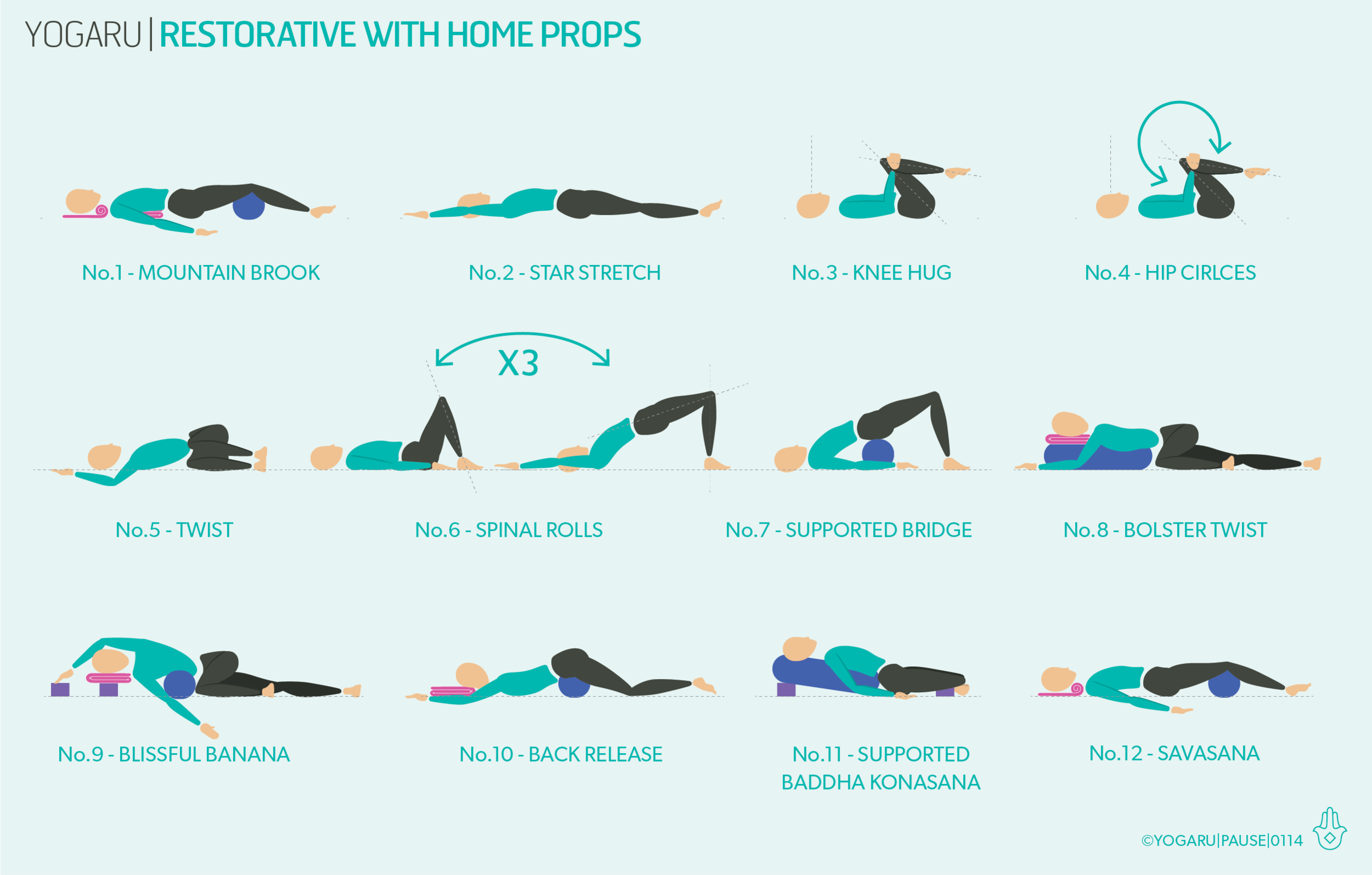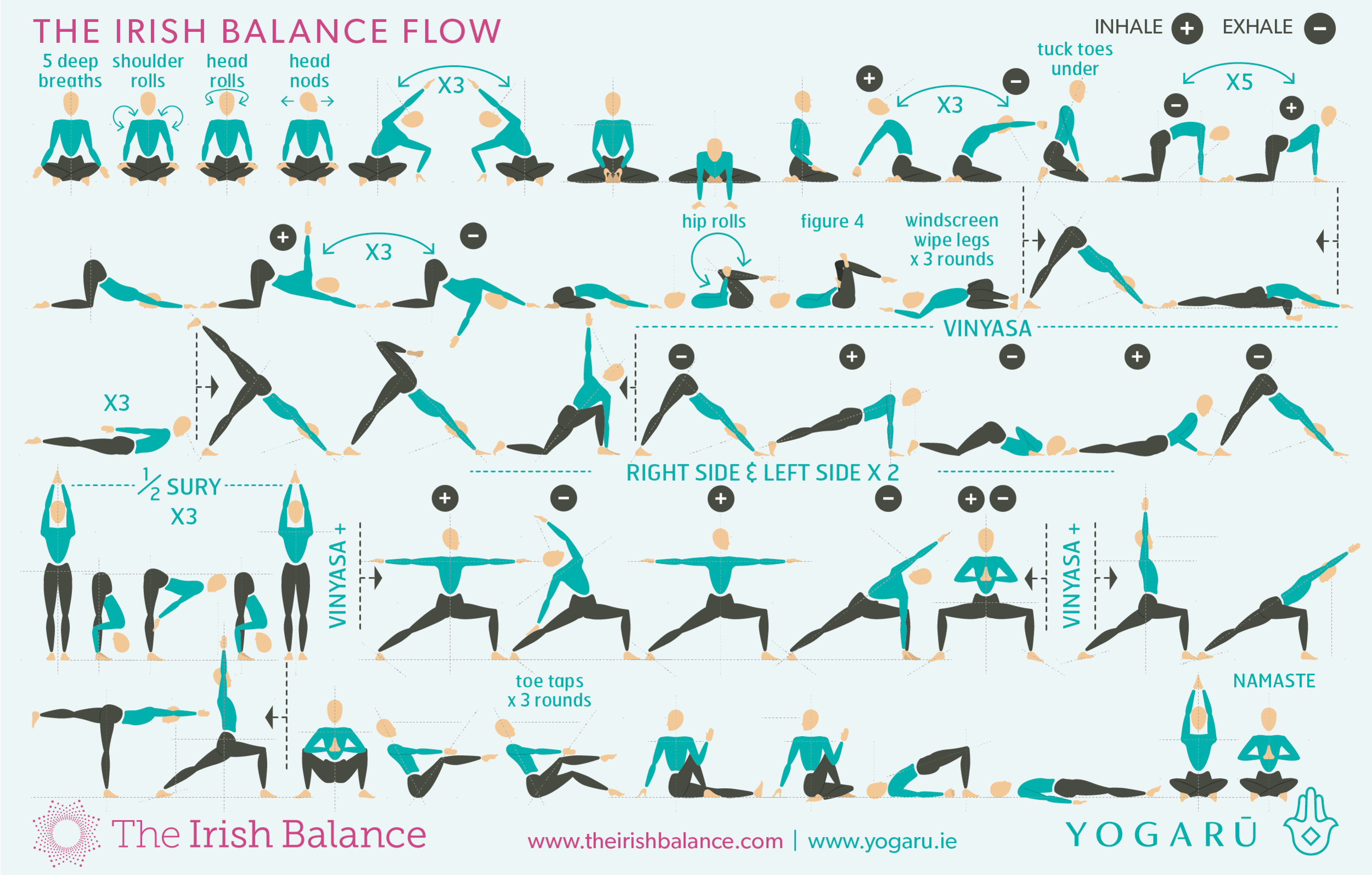This sequence is also available on YouTube
THE BENEFITS OF RESTORATIVE YOGA
Restorative yoga is the king of all yoga in terms of physical and mental wellbeing. It is particularly beneficial if you are feeling tired, stressed, anxious or have recently been ill. One of the main benefits of restorative yoga is that it triggers the rest, restore & digest nervous system response or the parasympathetic nervous system, through the cerebral cortex and the vagus nerve. This creates optimal conditions for the functionality of the organs of the body which supports the immune system, relieves symptoms of stress, anxiety and tension, rebalances hormones, releases muscle tension and aids the healing process.
The process of restorative yoga ‘takes a body that is feeling fragmented and puts it back together again in the kindest way possible’. In restorative we are consciously asking our muscles to release into the pose and gradually they submit. Even in sleep our muscles can be quite active, especially when we are dreaming. Restorative gives the whole body a chance to completely let go of held tension.
PROPS SWAPS
This sequence is for everybody, all you need is a yoga mat and some household prop swaps. Props bring restorative to another level. But you don't have to have a huge array of official yoga props to get started. You can improvise with household items that can do just as good a job. For this sequence I’ve used all household items as prop swaps as listed below:
Bolster - one large thick blanket & two bath size towels. Fold the blanket in four and place the two towels folded in half over the blanket. Roll them up and tie to secure with about four ribbon, strings or elastics.
Book bricks - two thick dictionaries or thick reading books per brick. Stack your two books and tie with string or elastic vertically and horizontally. Make two ‘book bricks’.
Tins prop - two tins & two thick socks. Place a tin in each sock, if the sock is long enough twist the top and fold it back down over the tin to seal it in.
Blankets - most blankets will do as a substitute for yoga blankets. Wool or thick cotton blankets are a better support than soft fleece blankets. Fleece blankets are good for keeping you warm and for a softer support.
EXPLORING THE SEQUENCE
Restorative is an accumulative practice. You might find it takes you a few poses to settle into the practice. The more restorative you practice the easier it will become to start the resting process. This sequence can be repeated as often as you like. You can practice it yourself or you can also practice this sequence with me on YouTube.
The body will cool down quickly so layer up and stay warm. Unlike regular yoga this is a socks on, stay cosy, practice! The poses and props are created to give you complete support. If possible have extra blankets and cushions beside you to add in if you need them. You will be holding the poses for between 3 minutes so scan down from head to toe and ensure every part of your body is happy. If after a few minutes you start to feel discomfort move to find comfort again. You are the boss of your practice!
If you are practicing this yourself you can use your phone to time when you need to move to the next pose, or you can use your instinct if you don’t like the idea of being disturbed with a sound. If you are using the YouTube video I will guide you in and out of the poses and do the timekeeping for you.
ALIGNMENT CUES
Below are the restorative techniques used in this sequence. The props you’ll need are:
1 x bolster - or 2 towels, wrapped around a horizontally rolled pillow and tied to secure.
2 x yoga bricks - or 2 two thick similar sized dictionaries.
2 x yoga blankets - or any wool, thick cotton or fleece blanket with density.
No.1 - Mountain brook
Start lying on your back with a half rolled blanket under your head, nestling the rolled part in the curve of your neck. Place a rolled up blanket under the lower tips of your shoulder blades and a bolster under the creases of your knees. If you have an additional blanket place it on top of you for warmth and for comfort. Legs and arms extended, palms facing up. Feet gently flop out to the sides. Shoulders melt to the floor. Eyeballs become heavy in their sockets, skin on the forehead smooth as silk. Soften the temples and find ease in the tiny lines around the eyes.
No.2-6 - Gentle warm ups
After Mountain Brook, take a series of stretches for the spine. Stretch your arms and legs out in a star shape then hug your knees into your chest. From your knee hug, cup a hand on each knee, take the knees wide with the toes touching. Circle both knees and gently roll around on your lower back, take three to 3-5 circles in both directions. Place your feet back down and gently let your knees drop to the left side of your mat. Extend your right knee away from you. Bring your arms to cactus position, with arms lifted and elbows bent either side of the body. Come back to center and repeat by dropping the knees to the right. Come back to lying with knees bent and arms by the side, take an exhale here, then inhale and lift your hips up and your arms overhead, exhale bring the hips back down and the arms back beside you. Repeat for 3-5 rounds moving with the breath.
No.7 - Supported bridge
From lying, lift your hips up and place the bolster horizontally under your hips. If your homemade bolster is too low add your two book bricks under the bolster. Settle your hips down onto the support of the bolster. Knees bent, feet hip distance apart or feet mat distance and knees together. Arms in cactus position or extended either side of your body, palms facing up.
No.8 - Bolster twist
Place your bolster vertically along the top centre of your mat with a folded blanket at the top. Sit with your right hip up against the end of the bolster. Place your hands on the mat either side of the bolster and with an inhale lengthen through the whole spine and on your exhale gently place your front spine along the length of the bolster. Place your right cheek on the folded blanket and let your arms gently hang either side of the bolster. Repeat on the left side.
No.9 - Blissful banana
Make a pillow with a book brick and a blanket on top of it at the top of the mat, place a tin prop above this at arms reach. Place your bolster horizontally on your mat with a space between your bolster and pillow. Sit with your right hip next to the long edge of the bolster, knees bent. Lengthen your right side along the mat and nestle the bolster into the curve of your waist. Place your head on your pillow, your shoulder in the space between your bolster and pillow and extend your right arm forward. Extend your left arm overhead and place hold onto the tin prop. If the raised arm doesn't suit you, bring your arm down and place it at your right arm. Repeat on the left side.
No.10 - Back release
Place the bolster horizontally along the centre of your mat with a rolled up blanket at the top of your mat. Come onto your front and lie with your belly on the bolster. Bring the arms to cactus position and place your forehead on the rolled up blanket. If this is uncomfortable on your neck you can flatten the blanket and lie on your cheek remembering to swap sides after a few minutes to even out your neck stretch.
No.11 - Supported Buddha konasana
Place your bolster vertically along the top of your mat with a rolled up blanket under the top. Make a head pillow with your second blanket to the top of your bolster. Have ready your book bricks and tin either side of you. Sit with the back of your hips up against the bolster. Bring the soles of your feet together and let your knees drop out to the sides. Prop your knees up with one book brick and tin each side. Gently lie back onto your bolster and place your head on the pillow at the top.
No.12 - Savasana
End your practice with at least 10 minutes of Resting Savasana. Lie on your back, legs stretched out, arms slightly away from your body, palms facing up. Legs slightly apart and feet fall out to the side, soften your shoulder, back of the neck long. Gently close your eyes, let the body become heavy and melt into the support of the ground. Soften the muscles across your forehead, releasing all tension, gaze inwards. Let all the muscles and bones of your body release. Bring your attention to the breath again, as you inhale think ‘this is me now’, and on your exhale tell yourself ‘this is the same me in the outside world’.
To save the images for personal use click and hold down the image until the ‘save image’ option appears; on Mac hold down ‘control’ and click the image to get the option box; on PC right click on the image to get the option box. Scroll down in the ‘option box’ and click ‘save image’.
Ruth Delahunty Yogaru





